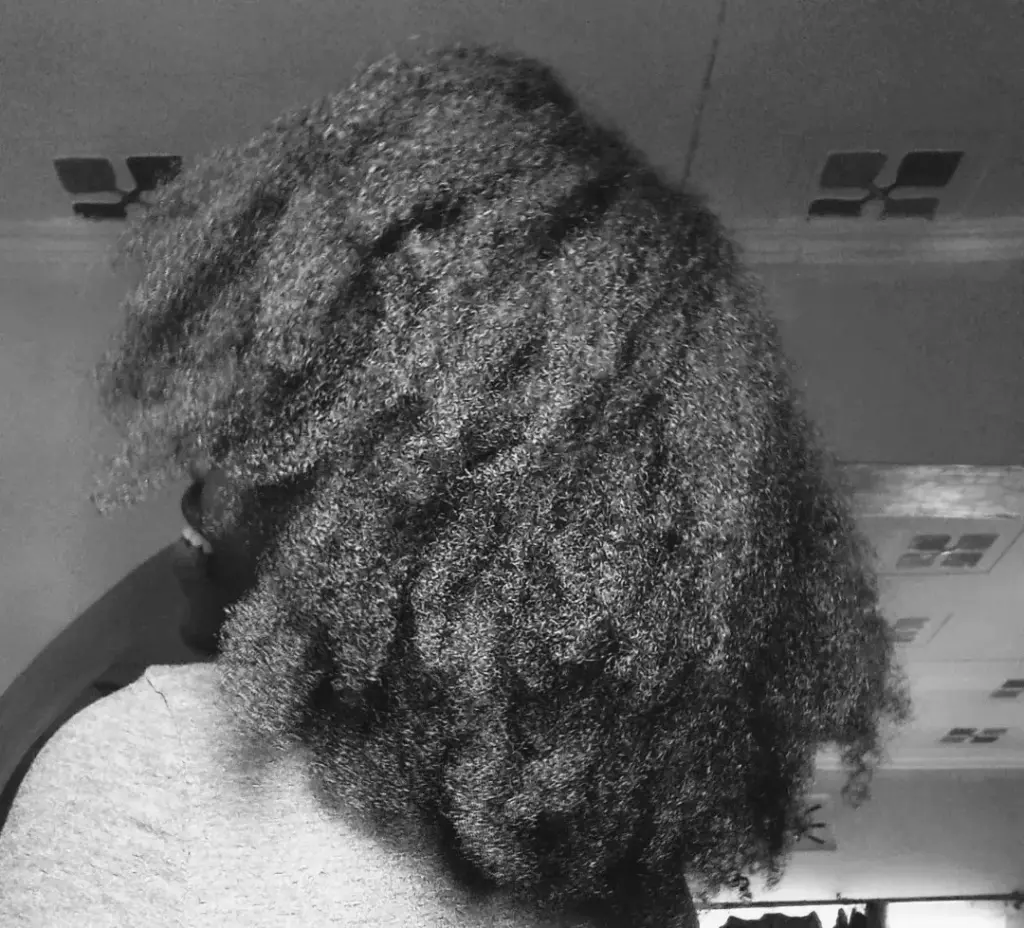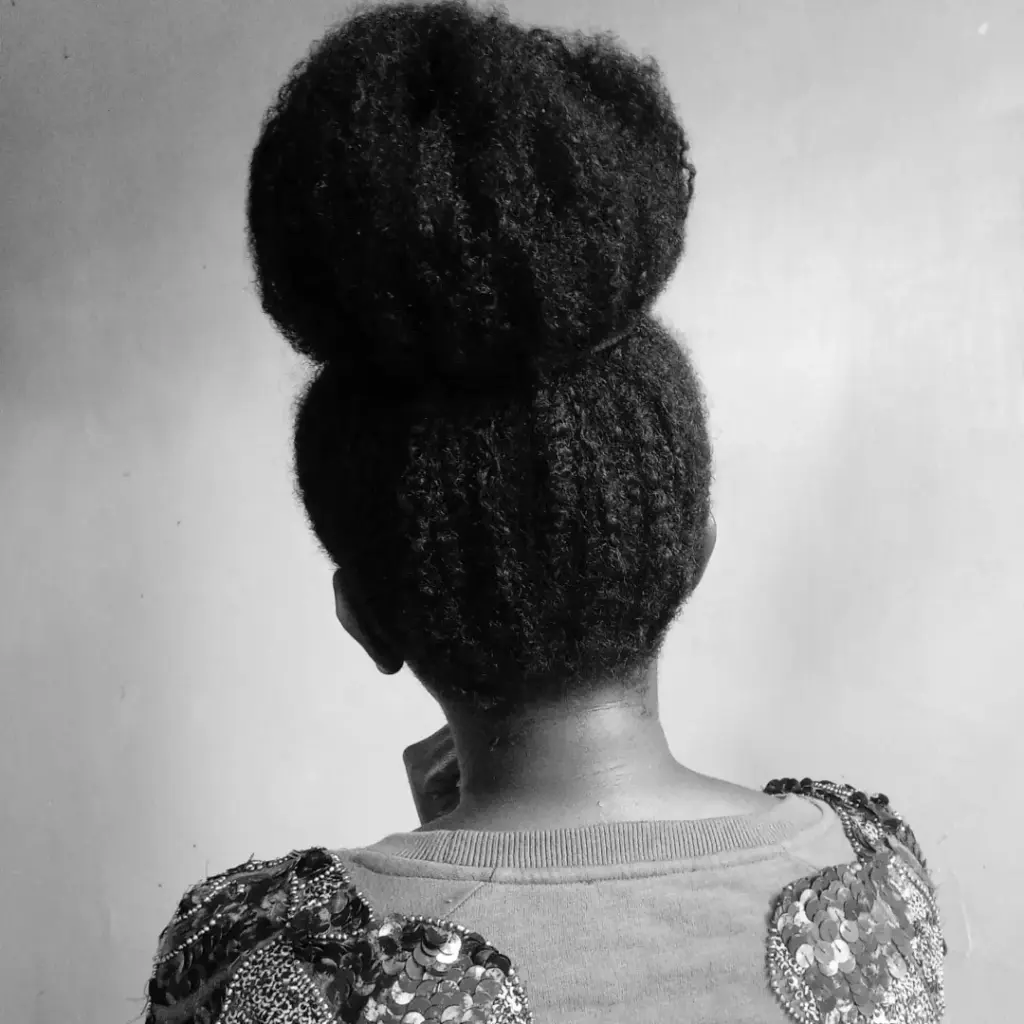Combing 4C natural hair can feel like a task, especially if you’re not sure of the best approach. One common question among 4C hair enthusiasts is whether combing hair while wet is truly beneficial. There’s a range of opinions on the topic, as wet hair is both more elastic and more fragile, which presents unique challenges and benefits.
In this blog, we’ll dive deep into the pros and cons of combing 4C natural hair when it’s wet, as well as some effective techniques and tips to help you decide if it’s right for you. By the end, you’ll have a solid understanding of whether combing your 4C hair while wet aligns with your goals for moisture retention, breakage prevention, and definition.
Feel like your hair has been the same length forever, I’ve an Ebook that will help you grow your hair healthier, longer and thicker. Grab your copy here… Also, check out all the Ebooks,guides and journals that will go a long way in your hair care journey here.

Table of Contents
Wet Combing 4C Hair: Benefits, Risks & How to Do It Safely
Why Combing 4C Hair is Different
4C hair is known for its tight coils and z-patterned curls, which make it unique and beautiful but also more susceptible to dryness and tangling. This texture is often more prone to shrinkage, knots, and breakage, which can make detangling and combing more challenging than with other hair types. Knowing this helps us understand why some people prefer wet combing, as well as why others choose to avoid it altogether.
Let’s explore the pros and cons of wet combing so you can make the best decision for your hair.
Pros of Combing 4C Natural Hair When Wet
1. Enhanced Manageability and Flexibility
One of the biggest benefits of combing 4C hair when it’s wet is that water softens the strands and adds flexibility. This is especially helpful for 4C hair, which is naturally more fragile and tightly coiled. The water reduces tension and makes it easier to separate the strands, allowing you to work through tangles and knots without pulling as much on the roots.
2. Reduced Breakage with Proper Products
Water adds elasticity to your strands, making them more pliable. This can reduce the risk of breakage, especially when you’re using a detangling product or conditioner that provides slip. When applied to damp hair, leave-in conditioners and detangling sprays coat the hair shaft, creating a smooth barrier that helps the comb glide through your hair without snapping or tugging.
Tip: Always use a wide-tooth comb or detangling brush on wet 4C hair. These tools are gentler and less likely to cause breakage than smaller-toothed combs.
3. Enhanced Curl Definition
Another advantage of combing 4C hair when wet is that it enhances curl definition. Water helps activate your natural curl pattern, and as you comb through, you’ll notice that your curls become more defined. For those looking to style their hair in wash-and-go styles or twist-outs, wet combing can help you achieve that well-defined curl structure.
Pro Tip: When combing for definition, use a product with curl-enhancing ingredients (like aloe vera or flaxseed gel) on wet hair to encourage even more curl clumping.
4. Even Product Distribution
When you apply products like leave-in conditioner, cream, or gel to wet hair and comb through, it ensures even distribution. Each strand gets coated with moisture and product, helping to lock in hydration and prevent uneven drying. Even distribution also helps maintain a consistent curl pattern, which is helpful for styles that require uniformity.

Cons of Combing 4C Natural Hair When Wet
1. Increased Fragility
While wet hair may seem more manageable, it’s also at its most vulnerable state. When hair is saturated, the water swells the cuticles, which can weaken the strands. Combing your hair while it’s soaking wet, especially without a leave-in or conditioner, can lead to breakage, split ends, and even hair loss in some cases.
To minimize this, avoid rough handling, and ensure your hair is well-conditioned before you start combing. If your hair is very fragile, consider letting it dry to a damp state before combing.
2. Potential for Shrinkage
4C hair tends to shrink considerably when wet, sometimes as much as 75% of its length. This can make it harder to achieve lengthier styles, and the shrinkage can contribute to more tangling, making the combing process more tedious.
Solution: If shrinkage is a concern, try stretching techniques after combing or consider combing on damp, stretched hair instead.
3. Product Buildup and Weight
Applying multiple products on wet hair can sometimes result in product buildup. If you’re layering leave-ins, creams, and gels, they can mix with the water and weigh your hair down, leaving it feeling heavy or greasy. In humid weather, this weight can also lead to frizz once the hair starts to dry.
To avoid this, be mindful of the products you’re using and opt for lightweight leave-ins or detanglers on wet hair.
4. Potential for Over-Moisturizing
Combing 4C hair while wet, especially if you’re frequently re-wetting it, can sometimes lead to over-moisturization. This condition, often called hygral fatigue, happens when the hair shaft repeatedly expands and contracts from wetting and drying, weakening the hair over time.

Best Practices for Combing 4C Hair While Wet
If you decide that wet combing is the right choice for you, here are some tips to make the process smoother and gentler:
- Start with Clean, Conditioned Hair: Begin with freshly washed hair that has been conditioned with a product that provides plenty of slip. This will make it easier to detangle and reduce tension on the hair shaft.
- Use the Right Tools: Wide-tooth combs, detangling brushes, or your fingers are the best tools for wet combing 4C hair. Avoid fine-tooth combs, which can cause unnecessary breakage.
- Detangle in Sections: Divide your hair into four or more sections before combing. Working in smaller sections minimizes tangling and allows you to focus on one area at a time, which reduces breakage.
- Start from the Ends and Work Your Way Up: Always begin detangling at the ends and gradually work your way up to the roots. This prevents tugging and minimizes breakage.
- Apply a Leave-In Conditioner or Detangling Spray: Adding a leave-in conditioner to your wet hair before combing can make a significant difference. Look for products that contain slip-enhancing ingredients like aloe vera, marshmallow root, or slippery elm. These help the comb glide through without causing friction.
Best Products for Wet Combing 4C Hair
Here are some highly recommended products that can make wet combing easier and gentler on your hair:
- Kinky-Curly Knot Today Leave-In Conditioner: Known for its incredible slip, this leave-in conditioner is perfect for wet detangling and helps to reduce breakage.
- Camille Rose Naturals Coconut Water Leave-In Conditioner: This lightweight conditioner is excellent for hydrating 4C hair and providing a smooth surface for combing.
- Aunt Jackie’s Knot on My Watch Instant Detangling Therapy: An affordable option, this detangling treatment provides slip and makes combing through wet 4C hair much easier.
- TGIN Green Tea Super Moist Leave-In Conditioner: Ideal for softening and detangling, this leave-in contains green tea and argan oil for added moisture and flexibility.

Alternatives to Combing Wet 4C Hair
If the cons outweigh the pros for you, there are other ways to detangle your 4C hair without combing it while wet:
- Finger Detangling: Using your fingers to detangle can be more gentle than a comb. Finger detangling lets you feel any knots or tangles and carefully work them out without causing breakage.
- Damp Combing: Instead of combing on wet hair, try towel drying or letting it air dry to a damp state. Combing damp hair can still provide some benefits without the high risk of breakage that wet hair has.
- Dry Detangling with Oil: Apply a lightweight oil, such as jojoba or almond oil, and finger detangle. This method is great for preventing shrinkage and reducing the risk of breakage.
Final Thoughts
Combing 4C natural hair when wet has its benefits and drawbacks. While it can make detangling easier and help with curl definition, it also requires extra care to prevent damage. Ultimately, whether you choose to comb your hair while it’s wet or not will depend on your hair’s unique needs, your styling preferences, and your hair care goals.
Remember, maintaining moisture, using the right tools, and applying products with slip can help you safely comb your 4C hair when it’s wet. By experimenting with these methods and techniques, you’ll discover the best approach to keeping your beautiful 4C curls healthy, hydrated, and damage-free!




